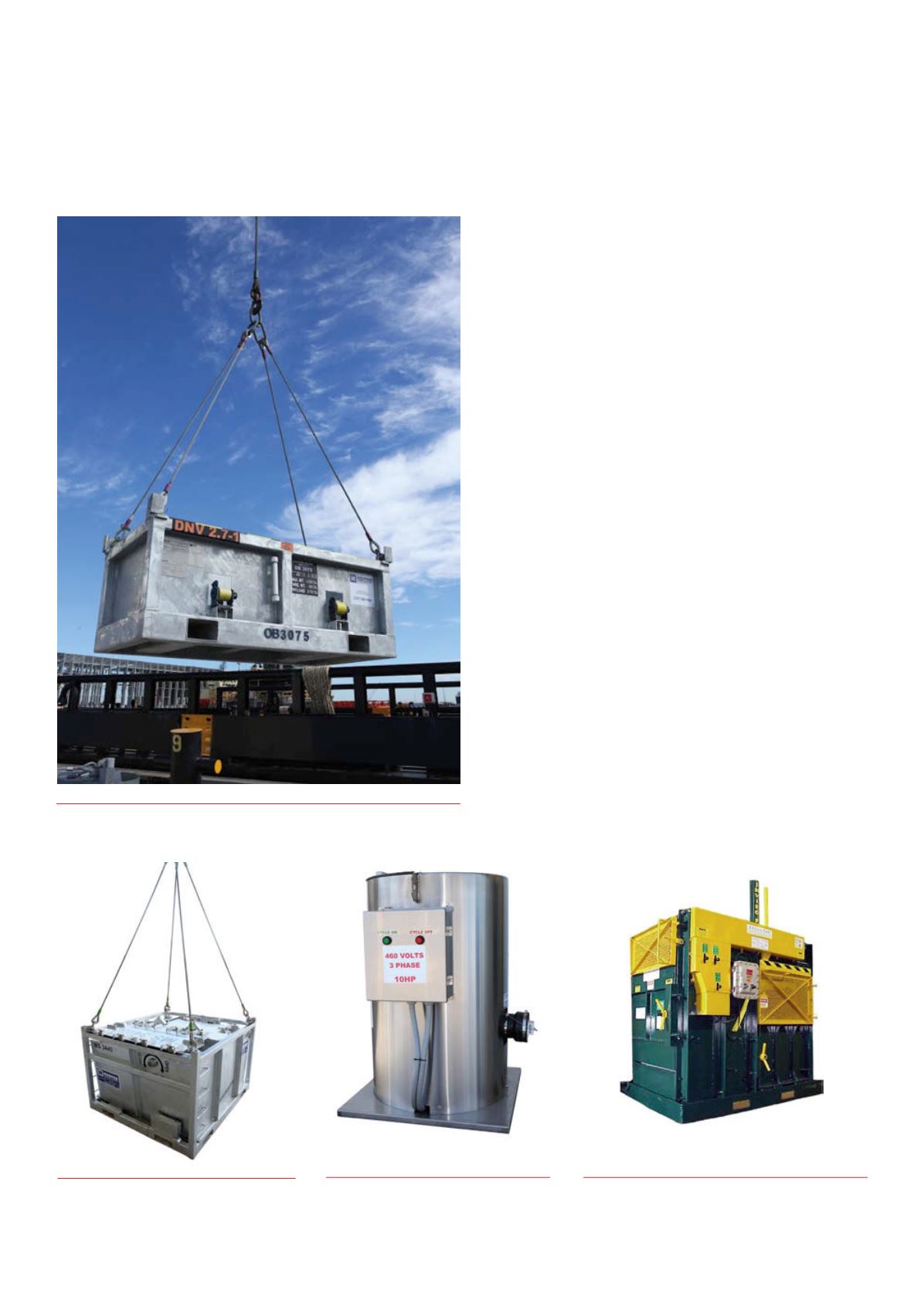
18 |
Oilfield Technology
January
2016
of sliding lidmud skips aims to alleviate these environmental concerns
for companies, as well as providing a safer working environment for
employees on offshore rigs.
GulfofMexico: extrasafetyrequirements
The sliding lidmud skips can, and will, be adapted to the specific
requirements of each country, as these do vary. Although themud skips
are DNV certified, in the US Gulf of Mexico, there is another separate
requirement stipulated by the US Department of Transport (DOT) for
mud skips that are transported by road at any point. The DOT require
aminimum thickness for the body of themud skips, and the units also
have to pass vacuumand pressure tests. In other markets, there are
no requirements for theminimum thickness of material or the vacuum
pressure tests.
This information was discovered when the first skip sample was
introduced to the US, and since the Gulf of Mexico is a large potential
market for themud skips (Hoover already has a large facility at
Port Fourchon, Louisiana,) the company set about making adaptations
to the skips, resulting in a complete redesign for the North American
market, in order to comply with the location-specific DOT requirements.
Thesemud skips have been available for four years, and aside from
major redesigns as discussed previously, Hoover takes the approach
of constantly adapting andmodifying the design in small ways based
on feedback fromon-the-job use. Some changes have been to improve
stacking ability (by welding an additional joint) for the rough offshore
environment, andmaking small modifications to the handles when they
have been returned with observable bends or damage, to improve their
durability for the future.
Providingasafebasketoffshore
Another piece of equipment that offers benefits in the realmof offshore
safety is the SafeSub® offshore sub basket, which is a solution for
challenges in working with subsea tools because it allows for the safe
handling, sorting, and transportation of subsea tools offshore. Designed
for any extreme offshore condition; even when positioned completely
inverted, the tools are held safely in place. The devices are stacked
vertically, helping to prevent pinch points that can cause serious injury,
and the design also eliminates the need for lifting straps and plugs,
eliminating the risk of slippage during transport. Additionally, tools are
locked into place with a safety cable, a safety chain, two removable pins
and a stabilising brace to ensure steady, safemoving of subsea parts.
Overall efficiency is also enhanced by enabling tools to be contained
vertically, which permits easier access. This equipment has transformed
how the offshore industry safely accesses andmanipulates tools in the
offshore environment. Traditionally, subsea tools have been transported
horizontally in cargo baskets loaded one on top of each other. This old
method has to date proved unproductive and also increases the risk of
personnel injury.
Figure 1.
DNV 2.7-1 rated offshore basket.
Figure 2.
DNV 2 7-1 approved 49CFR 176.340
compliantmud skip/cuttingbox.
Figure 3.
TuffGut offshore foodgrinder.
Figure 4.
Offshore trash compactor.


